Registry Hub#
The Registry Hub centralizes dataset management, experiment tracking, model registry, and test suite monitoring. It is structured into two main workflows:
Dataset Workflow: Upload, preview, and manage datasets used in experiments.
Experiment Workflow: Track, process, and manage experiments, models, and test suites.
Initialize the Panel#
To create and initialize the Registry Hub panel, use:
# Manage the Registry Hub
from modeva.dashboard.api import registry_hub
registry_hub()
Dataset Workflow#
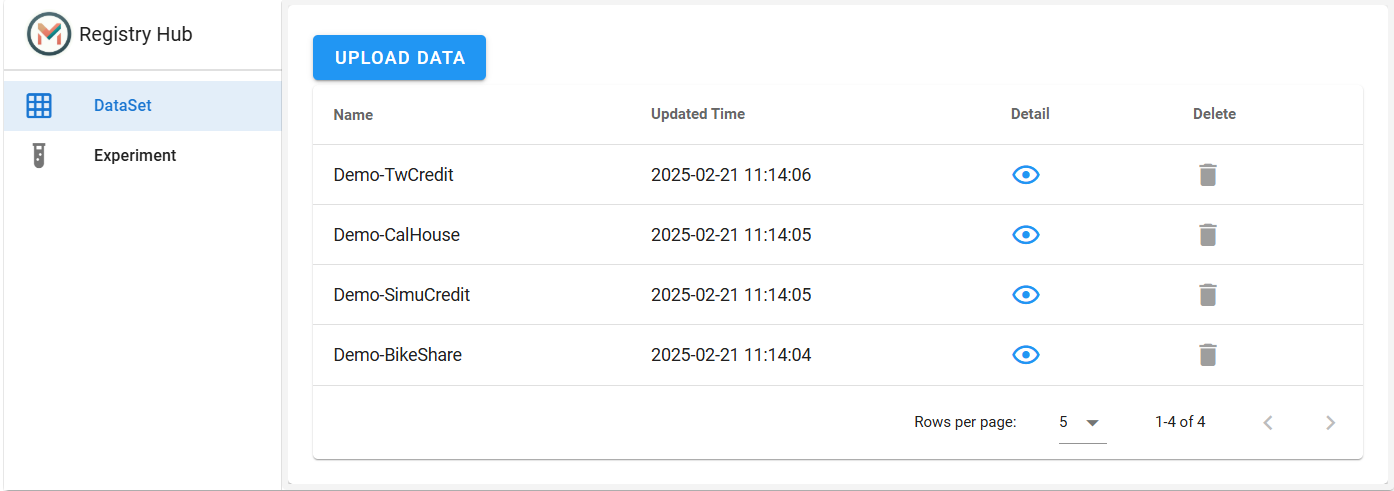
Uploading Data#
Click “Upload Data”.
Select a CSV File: Choose a dataset file (e.g., SimuCredit.csv).
Choose Dataset Type:
Main Dataset: Standalone dataset (e.g., “SimuCredit”).
Extra Dataset: Supplemental data linked to an existing main dataset.
Configure Upload Options:
Dataset Name: Auto-filled from the filename but editable (e.g., “SimuCredit”).
Override: Check to replace an existing dataset with the same name.
Parent Dataset: Required for “Extra” datasets to link to a main dataset.
Click “Register” to finalize.
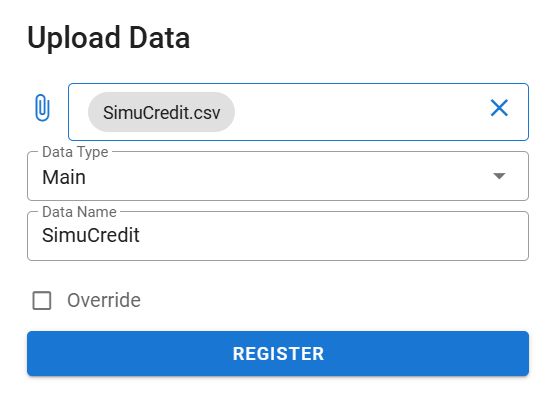
After registration, the dataset appears in the Dataset Registry with columns: Name, Updated Time, Detail, and Delete.
Warning
Uploading a new Main Dataset with Override resets all linked experiments.
Managing Datasets#
All uploaded datasets are listed in the Dataset Registry. There are four datasets stored automatically for demo purposes: Demo-SimuCredit, Demo-BikeShare, Demo-CalHouse, and Demo-TwCredit.
View Details: Click ![]() in the Detail column to see metadata like Sample Size (e.g., 20,000 rows for “Demo-SimuCredit”) and splits (main, train, test).
in the Detail column to see metadata like Sample Size (e.g., 20,000 rows for “Demo-SimuCredit”) and splits (main, train, test).

Preview Data: Click ![]() in the Preview column to inspect the first 10 rows of the dataset in the View Details tab.
in the Preview column to inspect the first 10 rows of the dataset in the View Details tab.
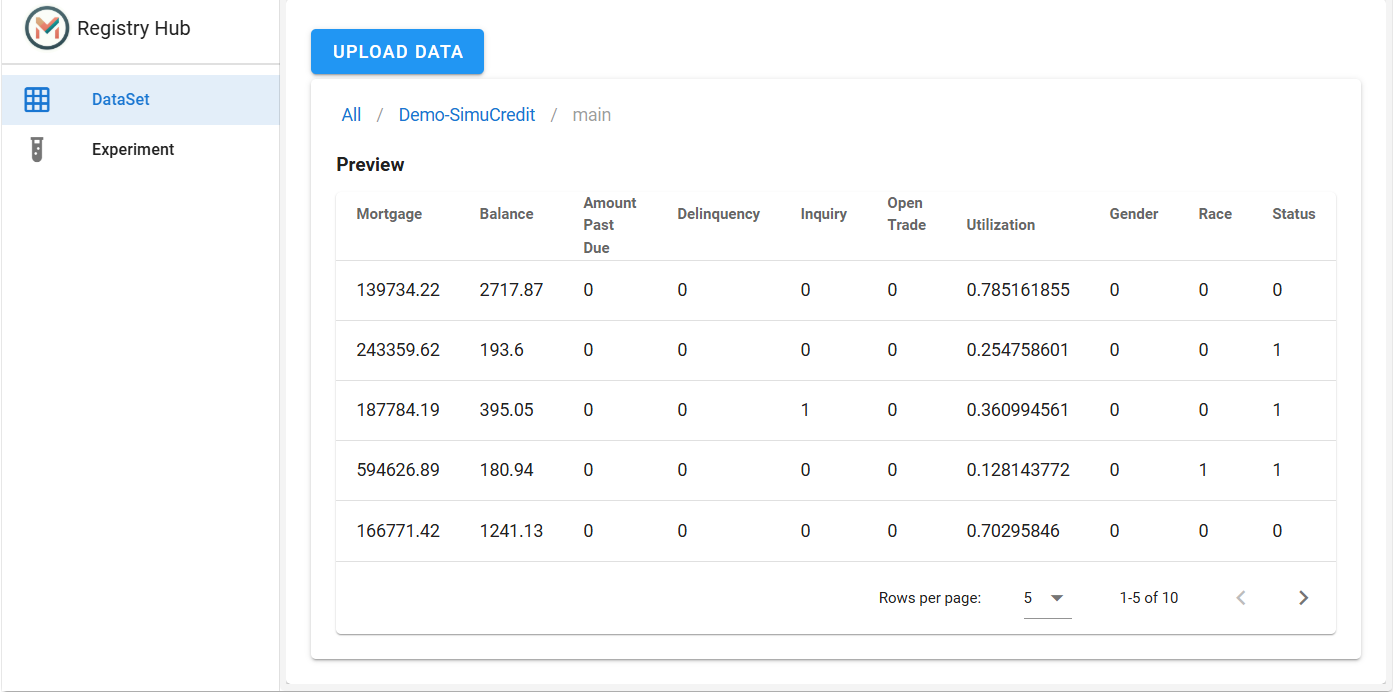
Delete Dataset: Click ![]() to remove it. Demo datasets are protected.
to remove it. Demo datasets are protected.
Warning
Deleting a dataset, all linked experiments are reset.
Experiment Workflow#
Creating & Managing Experiments#
Create New Experiment: New experiments are created with high code only.
If the experiment name exists, it will load the existing experiment; otherwise, it will create a new experiment.
# Create a new experiment
from modeva import Experiment
exp = Experiment(name='Demo-SimuCredit')
Bind Dataset: Select a dataset (e.g., “Demo-SimuCredit”) to link to the experiment.
# Link the dataset to the experiment
exp.data_load('Demo-SimuCredit')
Clear Experiment: Remove all data and models from the experiment.
# Clear the experiment
exp.clear()
Track Experiments#
Experiments track ML processes and are linked to datasets.

View Experiment Details: Click ![]() in the Detail column to see the sample size of each data split, main (20,000), train (16,000), test (4,000).
in the Detail column to see the sample size of each data split, main (20,000), train (16,000), test (4,000).
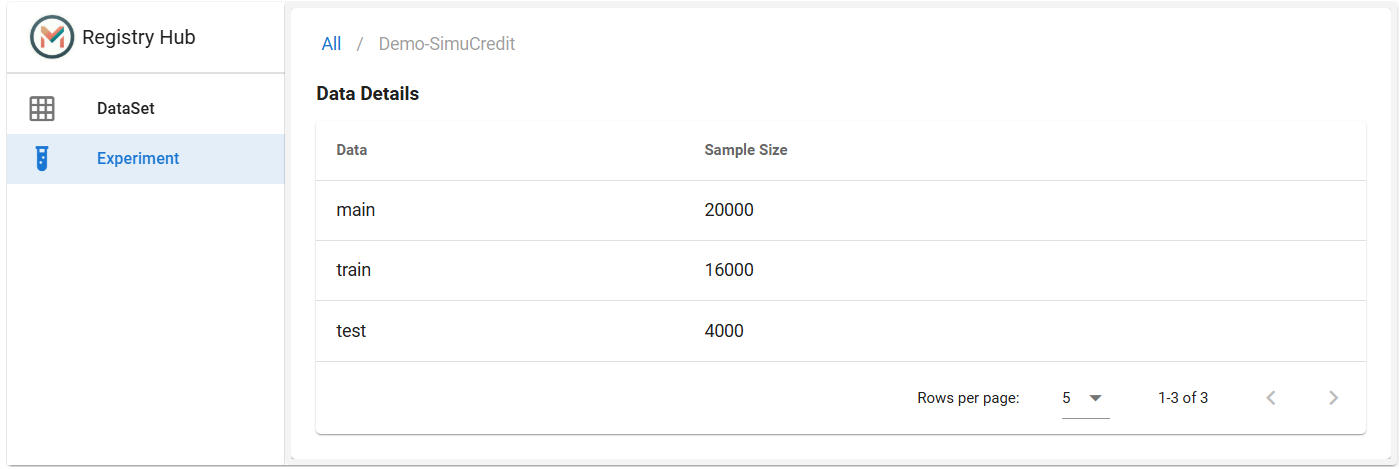
View Processing Steps: Click ![]() in the Processing column to see feature-specific transformation records (e.g., scaling, encoding).
in the Processing column to see feature-specific transformation records (e.g., scaling, encoding).
Each row represents a feature (e.g., “Utilization”, “Gender”).
Each column represents a feature status (e.g., “Imputation”, “Binning”, “Encoding”, “Scaling”, “Target”, “Sample Weight”).
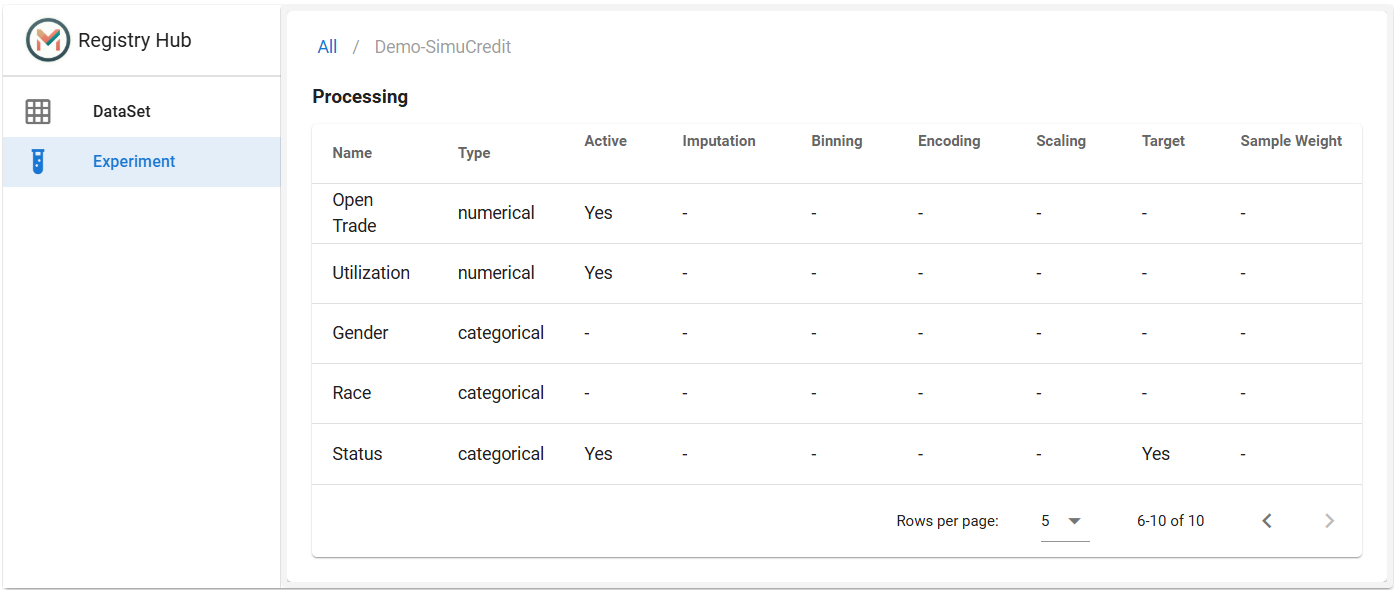
View Models: Click ![]() in the Model column to view trained models (e.g., “XGBoost”).
in the Model column to view trained models (e.g., “XGBoost”).

Hyperparameters: Click
 in the Parameter column to view parameters like max_depth, n_estimators, and random_state.
in the Parameter column to view parameters like max_depth, n_estimators, and random_state.
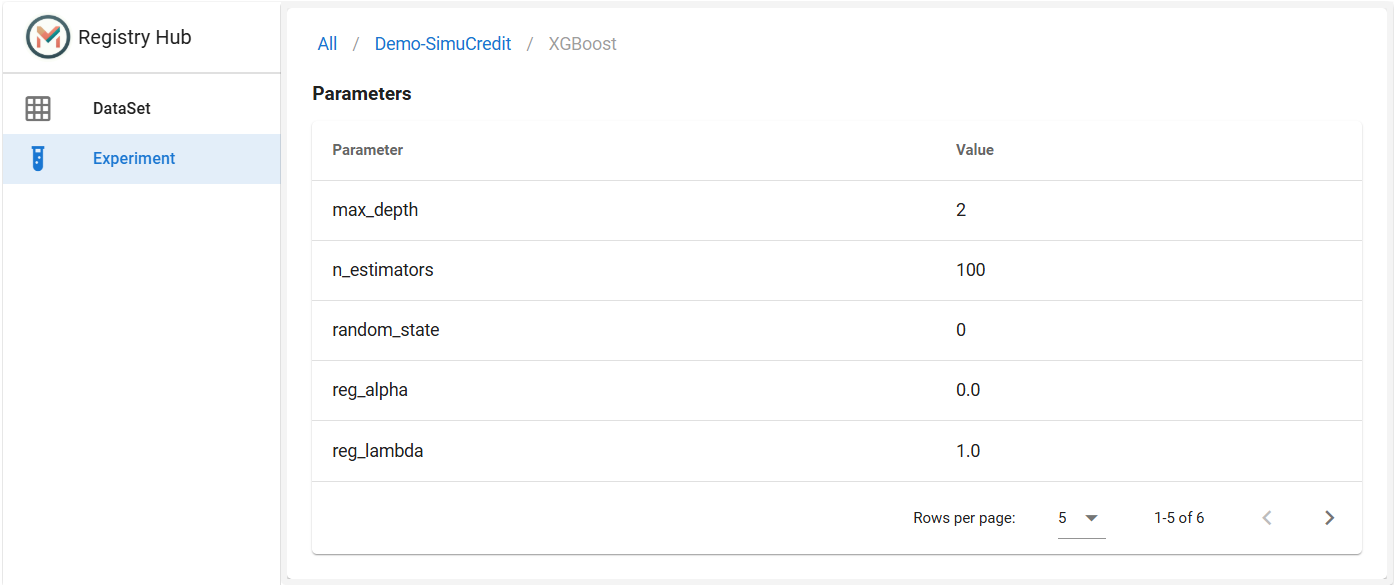
View TestSuites: Click ![]() in the Testsuite column to explore test results (e.g., “Categorical-Result”, “Numeric-Result”).
in the Testsuite column to explore test results (e.g., “Categorical-Result”, “Numeric-Result”).
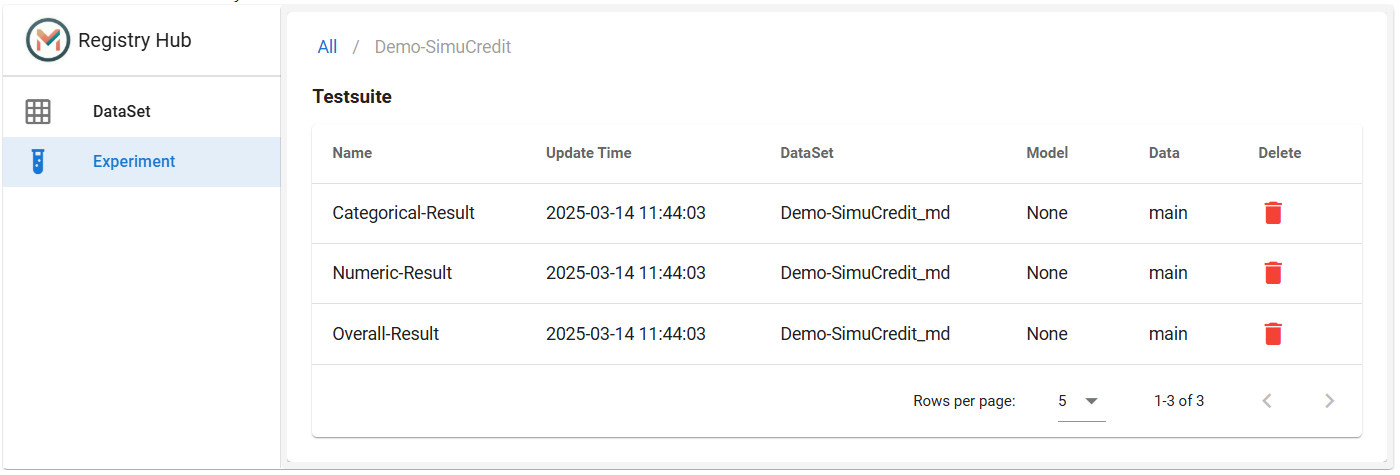
Delete Experiment: Click ![]() to remove an experiment and all associated data.
to remove an experiment and all associated data.
Warning
Deletion permanently removes all experiment data, including models and test results.
The Registry Hub panel provides a centralized location for managing datasets, experiments, models, and test suites. It simplifies the tracking and management of ML processes, enabling users to efficiently monitor and manage their projects.
